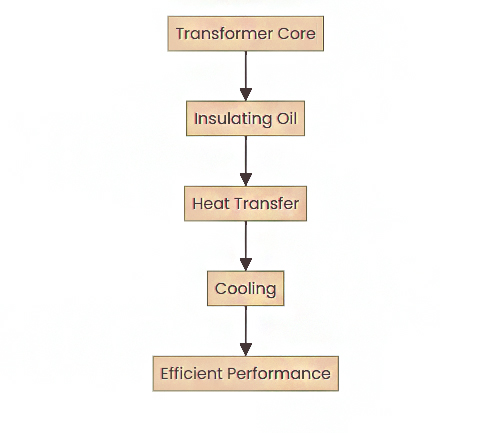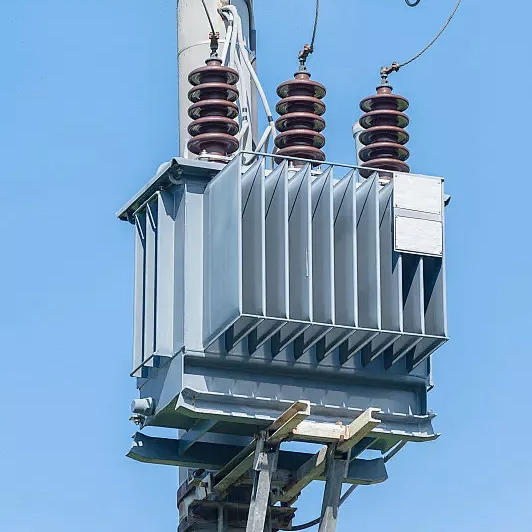What is an oil-immersed transformer?
Oil-immersed transformers are critical components in electrical networks. They employ insulating oil for both cooling and insulation purposes, which enhances their efficiency and longevity.
Core and Windings: The essential parts of the transformer submerged in oil.
Insulating Oil: Acts as an insulator and cooling medium.
Heat Transfer: The oil moves heat away from core and windings.
Optimal Temperatures: Maintains temperatures for efficient operation.
Efficient Performance: Ensures the transformer works effectively.
An oil-immersed transformer is a type of transformer where the core and windings are immersed in an insulating oil. This oil provides insulation and also helps in cooling the transformer during operation. The oil assists in transferring heat away from the transformer components, thus maintaining optimal operating temperatures and ensuring efficient performance.
Transformer Structure and Function:
The oil-immersed transformer is a testament to the ingenuity of electrical engineering, providing a robust solution for managing heat and insulation in a compact form.
The role of oil in oil-immersed transformers :
In oil-immersed transformers, the role of oil is multifaceted and crucial to the transformer’s operation and longevity. Here’s a breakdown of its key functions:
- Cooling:
- Oil serves as a coolant, dissipating heat generated during transformer operation.
- By absorbing heat from the core and windings, the oil prevents overheating, ensuring optimal performance and preventing damage to the transformer components.
- Insulation:
- Oil provides insulation between the transformer’s live parts, such as the core and windings, and the grounded tank.
- This insulation helps prevent electrical breakdown and ensures safe and reliable operation of the transformer.
- Arc Suppression:
- In the event of a fault or short circuit, oil helps suppress arcs by quickly cooling and extinguishing them.
- This prevents further damage to the transformer and reduces the risk of fire or explosions.
- Dielectric Strength:
- Oil has high dielectric strength, allowing it to withstand high voltages without breaking down.
- This property ensures efficient electrical insulation and reliable performance of the transformer under various operating conditions.
- Contaminant Absorption:
- Transformer oil has the ability to absorb moisture, gases, and other contaminants that may degrade insulation properties.
- Regular oil testing and maintenance help monitor and maintain oil quality, ensuring optimal performance and extending the transformer’s lifespan.
- Pressure Equalization:
- Oil-immersed transformers are designed with conservators that allow for expansion and contraction of oil volume due to temperature variations.
- This helps maintain internal pressure equilibrium, preventing the entry of air o
 r moisture into the transformer.
r moisture into the transformer.
Why choose our transformer?
- 1. Cutting-Edge Technology:
Incorporating the latest advancements in transformer design and materials, our product features state-of-the-art technology for optimal efficiency and reliability.
- 2. Customization Options:
We offer flexible customization options to tailor the transformer to your specific project requirements, ensuring seamless integration and optimal performance.
- 3. Energy Efficiency:
Our transformer is engineered for maximum energy efficiency, helping you reduce operational costs and minimize environmental impact.
- 4. Reliability and Durability:
Built to withstand the rigors of demanding operating conditions, our transformer is robust, reliable, and durable, ensuring uninterrupted power distribution.
Conclusion:
Choosing our YRO transformer means selecting a solution that combines unmatched performance, reliability, efficiency, and support. Experience the difference with our transformer and empower your operations with a transformative power distribution solution.





